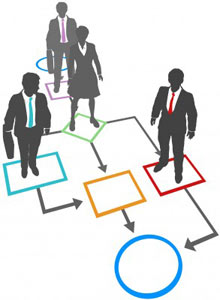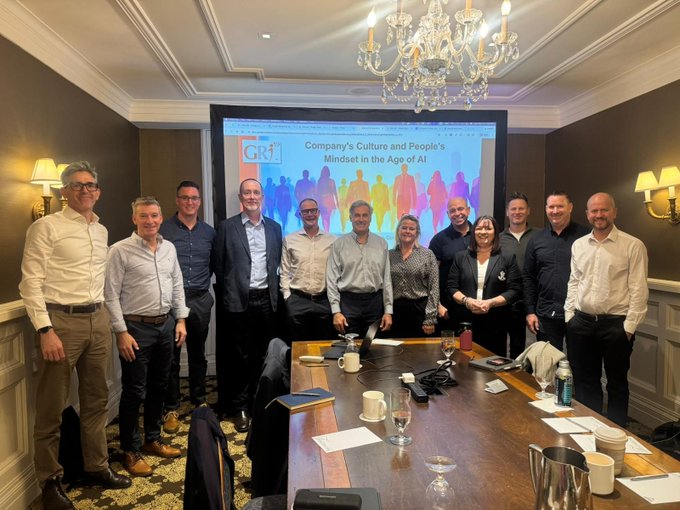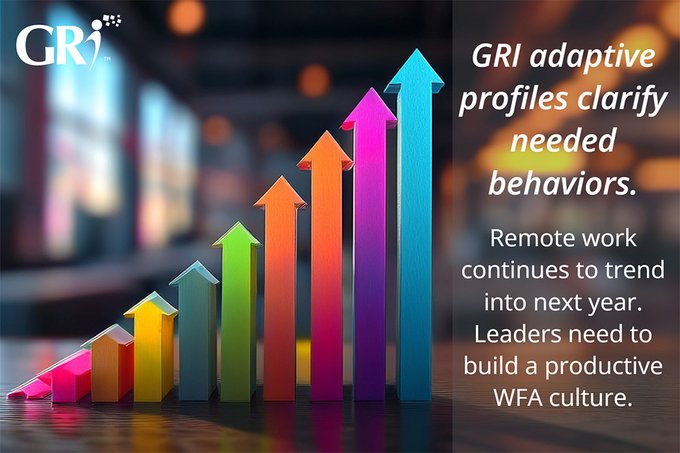Aligning Talents
Posted by Frederic Lucas-Conwell

Aligning Talents
Does your company or organization have a workforce plan in place to predict and direct your talent management?
Creating a workforce plan, to align your talent needs with your business strategies and projections, can be a complex process.

Workforce Planning at it's most basic determines:
- Quantity - How many people you have, or will need
- Quality - That they have the right skills and ability, and the required knowledge to do the job
- Placement - The right individuals are doing jobs that best utilize their abilities
- Timing - The right people are in position when needed, or can be moved into position with little effort
All while keeping in mind the strategic plans of the business or organization.
Developing A Workforce Plan
In order to develop the plan, you will want to include data from a number of sources, all valuable in their own right. But to complete the picture, you need more.
First, let's look at the most commonly used sources for gathering workforce planning data, and how they form a part of the picture.
Historical Data
Some of the capabilities of an organization can be measured with what seems like mathematical precision using historical records, including information from internet sites such as LinkedIn:
- educational attainment
- degrees held
- training delivered
- experience levels
- skills set
This gives a first level understanding of the capabilities of an organization's human capital.
While these measures generate accurate data, they don't give any insight into the thinking, motivation, or morale of employees, either individually or as a group.
They are one indicator, but far from the complete picture.
Surveys
More data can be obtained from direct measurements of employee satisfaction and morale.
For example:
- job satisfaction surveys can report answers to specific questions
- exit interviews can document employees' opinions of the company
But the validity of the results is dependent on exactly what was asked, who ran the survey, and what fraction of all employees actually responded.
If these tools are used in a systematic way, they can provide some useful information and fill in another part of the overall picture.
"Knowing a great deal is not the same as being smart; intelligence is not information alone but also judgment, the manner in which information is collected and used"
Dr. Carl Sagan
Anecdotal Reporting
Anecdotal data can be, and often is, gathered by line managers and summarized up the chain to the leadership at the top.
The ideal organization would task these line managers to systematically gather information about their direct reports - the people they know best - and then summarize and report it.
These managers can collect comments about:
- employee morale
- why people leave the organization, and
- how well employee preferences and attitudes fit the current business strategy
But each manager will ask questions in their own way, influencing the results.
Information like this is highly filtered each time it's reported up a level, not to mention that few organizations have any systematic way of collecting it.
Still, this is one more indicator, and one more part of the picture is filled in.
Direct Knowledge
In the ideal case, all senior managers would have a direct, working relationship with every employee.
An experienced manager can gain a useful understanding about the people they work with, including:
- work style
- preferences
- motivation
- morale
But for a business of even moderate size, this isn't realistic.
Businesses that are spread over a wide geography, across multiple time zones, with people working both at an office and at home, not to mention multiple cultures and generations, make it unlikely that this kind of direct knowledge will become visible, much less collected and analyzed.
A skilled manager should have this information about his or her direct reports, and this could add another part of the total picture.
The GRI Completes The Picture
The GRI aligns all of the various elements of your workforce planning so you can get the most accurate idea of your workforce needs, current and future.

- The profiles give a variety of views, from the individual department, to a division, to the total organization.
- GRI profiles are not anecdotal, filtered, or biased by who asked the question.
- They give you a clear and positive picture of everyone's drives and motivations
The result?
- A more complete picture of a company's teams and individuals
- Greater accuracy in anticipating issues early
- Stronger workforce plans
- More strategic talent management plans
- An enhanced ability to grow the organization more productively
Latest Articles
Groupama Successful Transformation in Romania: The GRI, Catalyst for Profound Change
The history of Groupama in Romania is an eloquent testament to resilience, strategic vision, and the transformative impact of innovative management tools. Arriving at the...
Hybrid Work: A Management Revolution
The COVID-19 pandemic has acted as an unprecedented catalyst, radically transforming our approach to work. What was once a marginal practice has become the norm for many...
Leadership 3.0: Objective Insights for People-Centric Leaders
Steve, a brilliant entrepreneur, poured his heart into his work. His team at "Innovatech" was on the brink of a major breakthrough, a new app that promised to revolutionize...



